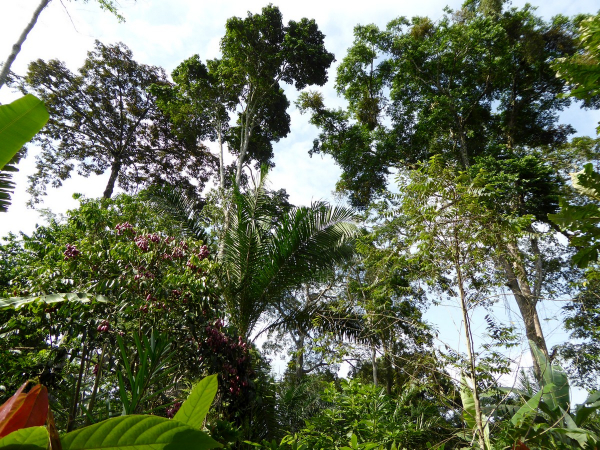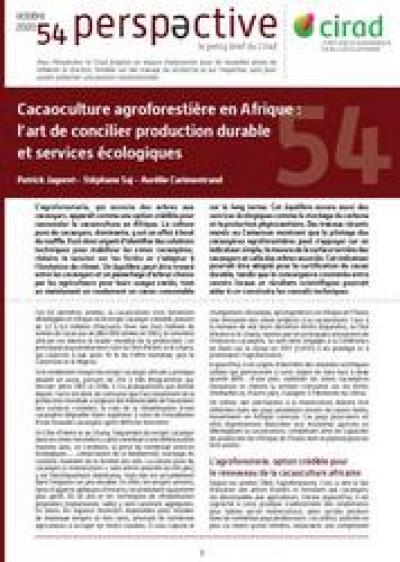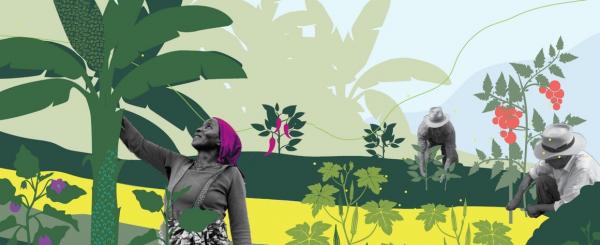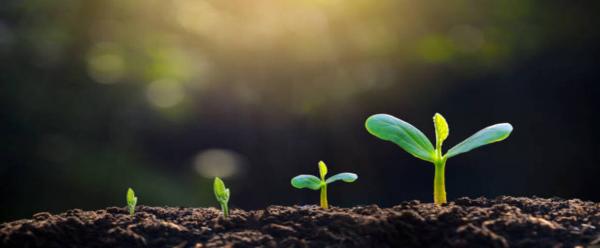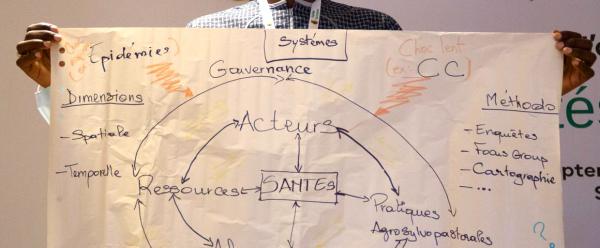Just out 7 January 2026
- Home
- CIRAD news
- News
- Cocoa agroforestry systems, reconciling production and ecology
Cocoa agroforestry systems in Africa - the art of reconciling sustainable production and ecological services
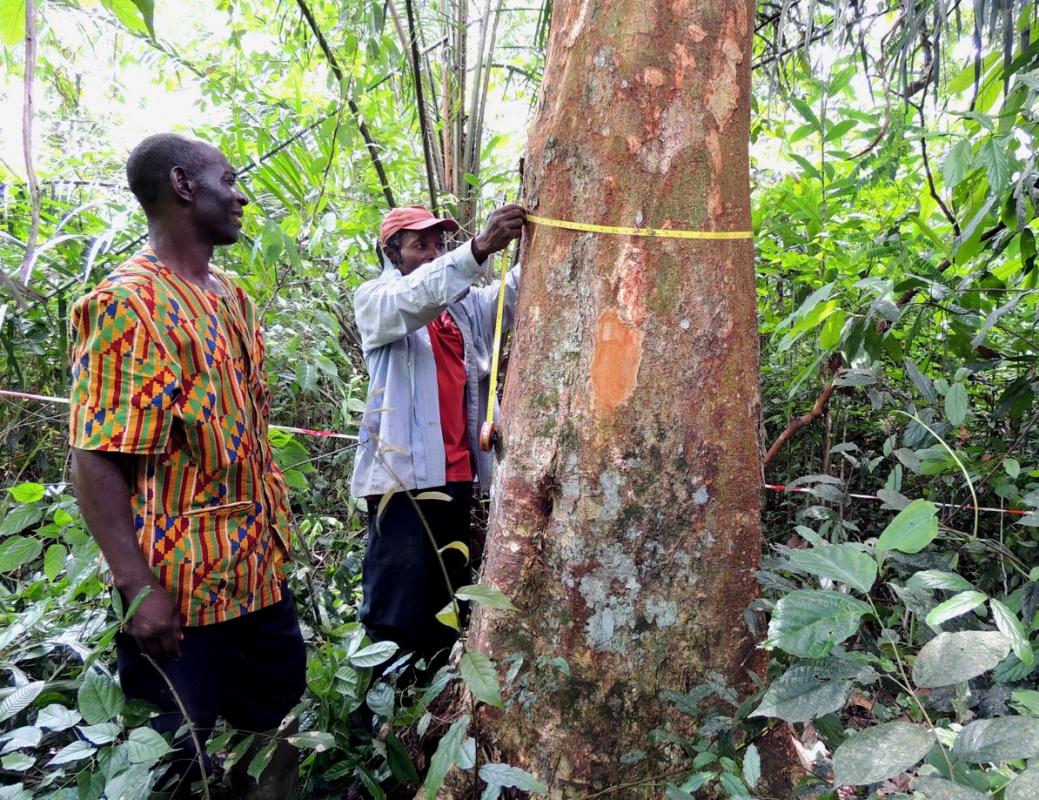
Since the 1950s, cocoa farmers have been advised against combining fruit and forest trees with cocoa trees, due to supposed low yields. However, this traditional practice is still implemented in several African countries, including Cameroon, the world's fifth largest cocoa producer.
Cocoa agroforestry systems are actually more productive than expected
Recent work in the Cameroon by CIRAD and the country's Institut de recherche agronomique pour le développement (IRAD) showed that planting trees in cocoa stands ensures higher yields than previously thought. Pod counts on more than 160 cocoa trees in agroforestry plantings revealed an average yield of 740 kg of cocoa per hectare, if not more. This is three times higher than the figures quoted in previous studies, which were often based on reports from farmers.
Some 75 tonnes of carbon stored per hectare
In addition to these very respectable yields, cocoa agroforestry systems serve to capture large quantities of carbon. Provided there are enough trees and sufficient variety, up to 75 tonnes of carbon may be stored per hectare, ie half the storage capacity of local secondary forests.
In some plots, this trade-off between cocoa production and carbon sequestration is accompanied by better regulation of two major cocoa pests: black pod rot and mirids, biting and sucking insects that gradually kill cocoa trees. To limit the impact of these pests, cocoa farmers constantly modulate the shade provided by associated trees, which allows them to reduce pesticide use in their plo
Using basal area as an operational indicator
To pinpoint the best trade-off between cocoa production, ecological services and sustainability in cocoa agroforestry systems, agronomists from CIRAD and IRAD tested the concept of basal area. This indicator, which is already used in silviculture, corresponds to the cross-sectional area of a tree trunk at a given height (in this case around a metre).
When applied to a cocoa planting, it serves to calculate the ratio of the basal area of all the cocoa trees to that of all the trees in the plot. The researchers demonstrated that a relative basal area of between 40 and 50% ensures the best trade-off between cocoa yields and sustainability.
Rethinking sustainable cocoa certification
The studies in Cameroon showed that to benefit from the ecological services rendered by the other trees associated with cocoa trees, around a hundred trees per hectare are required. This is substantially more than current certification programmes recommend. Moreover, most other certification criteria, such as the degree of shade or indigenous vegetation cover, do not enable a genuine assessment of the trade-off between cocoa production and ecological services.
Relative cocoa tree basal area, which is both precise and easily measurable and can be adapted to local conditions, could be the ideal solution. What remains is to ensure that voluntary sustainability standards take this indicator on board as a sustainable cocoa certification tool.
Download Perspective 54
Cocoa agroforestry systems in Africa - the art of reconciling sustainable production and ecological services
This issue is also available in French and Spanish on the CIRAD journals website.
With Perspective, CIRAD sets out to suggest new lines of debate and action, backed up by research work, albeit without presenting an official institutional position.
This series of 4-page summaries presents novel ideas or policies on development issues of strategic importance for countries in the South: food security, land tenure, climate change, energy security, forest management, standards, etc .
Making cocoa growing in West Africa more sustainableThe five-year Cocoa4Future project, which began recently in Ivory Coast and Ghana, aims to promote the separation of cocoa growing from deforestation, while contributing to the restoration of degraded cocoa plantings. It has 7 million euros of funding from the EU DeSIRA programme and the Agence française de développement, and is coordinated by CIRAD, with ten project partners*. Cocoa4Future will be monitoring the main cocoa farming systems in the region (monocultures, simple and complex agroforestry systems), to assess their agronomic, ecological and socioeconomic performance and identify cocoa growers' technical innovations. It will also help to identify the various phytosanitary, socioeconomic and environmental constraints facing cocoa growers in West Africa, and to develop solutions. The data gathered during the project will be used to help roll out the most effective technical and organizational innovations on a wider scale. * Cocoa4Future associates seven research organizations in Ivory Coast and Ghana, two NGOs, and the European Commission Joint Research Centre. |

























